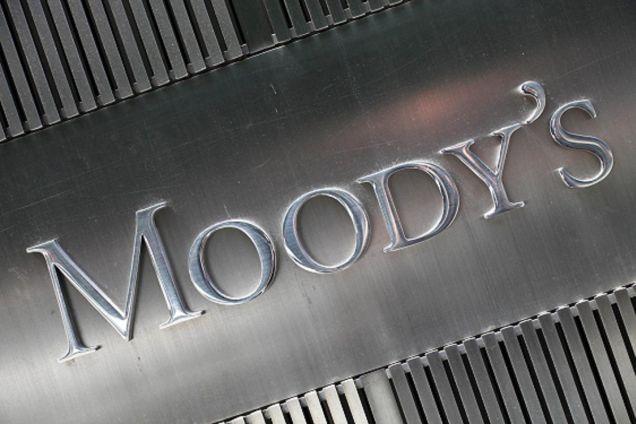Bahamar Chapter 11 we at BP believe is at the centre of the downgrade….

Global Credit Research – 22 Aug 2016
New York, August 22, 2016 — Moody’s Investors Service has today downgraded the bond and issuer ratings of the government of the Bahamas to Baa3 from Baa2 and has changed the outlook to stable. The rating actions conclude a review for downgrade that commenced on July 1, 2016.
The key drivers of the downgrade are the following:
1) Prospects of low medium-term growth pointing to weaker economic strength relative to similarly-rated peers
2) The persistent increase in the government’s debt ratio leaves the Bahamas with less fiscal space relative to rating peers
The stable outlook on the rating reflects Moody’s expectation that sovereign credit metrics will remain in line with a Baa3 rating as fiscal consolidation will continue over the coming years and that government debt metrics will likely stabilize in fiscal 2016/17 as the deficit declines. The stable outlook also incorporates the expectation that economic performance will strengthen in 2016-18, returning to levels close to the Bahamas’ potential growth of 1-0%-1.5%. Under this baseline, we would see a stabilization of the Bahamas’ key economic and fiscal metrics, although these metrics would remain weaker than for most Baa rating peers.
Moody’s has today also lowered the Bahamas’ long-term foreign-currency bond ceiling to Baa1 from A2 and long-term foreign-currency deposit ceiling to Baa3 from Baa2. The short-term foreign-currency bond ceiling was lowered to Prime-2, whereas the short-term foreign-currency deposit ceiling remains at Prime-3. The Bahamas’ long-term local currency country risk ceilings were lowered to A2 from A1.
The long-term foreign-currency bond ceilings for Bahamas – Off Shore Banking Center is Aa3 and long-term the foreign-currency deposit ceiling is A2. The short-term foreign currency bond and deposit ceilings are Prime-1.
RATINGS RATIONALE
RATIONALE FOR DOWNGRADE TO Baa3
FIRST DRIVER: PROSPECTS OF LOW MEDIUM-TERM GROWTH POINTING TO WEAKER ECONOMIC STRENGTH RELATIVE TO Baa-RATED PEERS
The first driver for the downgrade is Moody’s expectation that the Bahamas’ economic performance over the next five years will likely remain subdued and constrained by structural rigidities. Moody’s forecasts that the Bahamian economy will recover in 2016-20, with real GDP growth expected to average 1.3% during this period, the fourth weakest economic performance out of the current 22 Baa-rated sovereigns.
Structural constraints that limit potential growth include relatively high energy costs, a bureaucratic burden that hinders doing business and labor market rigidities. These constraints are reflected in, for example, the prevalent high rate of unemployment and non-performing loans in the banking system, and have also negatively affected the competitiveness of the tourism sector — a mainstay of the Bahamas’ economy — that accounts directly and indirectly for about 50% of GDP. While authorities have implemented some measures to address these issues and have put forward a pro-growth reform agenda via the National Development Plan, progress has been slow so far.
Given these issues, Moody’s considers that the Bahamas’ Economic Strength will remain ‘Low’, the lowest score among Baa-rated sovereigns, which have an average score of ‘Moderate (+)’.
SECOND DRIVER — MORE LIMITED FISCAL SPACE RELATIVE TO RATING PEERS FOLLOWING THE PERSISTENT DETERIORATION OF THE GOVERNMENT’S BALANCE SHEET
The government has reduced the fiscal deficit for three consecutive years, with more progress attained following the introduction of a value-added tax (VAT) in January 2015 that has outperformed government estimates. Nevertheless, the Bahamas’ government debt/GDP ratio has continued to rise to an estimated 66.1% by the end of 2015/16 from 60.2% in 2013/14. The government’s medium-term plan forecasts continued deficit reduction and a balanced budget by 2018/19 on the back of strong revenue growth mainly from VAT and a reduction of expenditures in real terms after 2016/17. According to the authorities this will lead to a reduction in the government’s debt/GDP ratio, closer to 60% of GDP.
Moody’s baseline, which incorporates a more gradual fiscal consolidation path, forecasts that the debt/GDP ratio would peak in 2016/17 at about 67% and then stabilize around 65%. In addition, the Bahamian government has a moderate interest burden, with an interest-to-revenues ratio of about 13%. These fiscal metrics point to somewhat limited fiscal space for the sovereign relative to Baa-rated peers, reducing the Bahamas’ capacity to respond to economic shocks.
WHAT COULD CHANGE THE RATING – DOWN
Downward rating pressure could emerge if the government’s commitment to fiscal discipline diminishes, delaying the stabilization of debt metrics. Slower than anticipated economic growth, particularly if it lowered government revenue growth, a key component of the deficit reduction strategy, would also be credit negative. The rating could also be downgraded if the government’s contingent liabilities, in the form of guaranteed debt of state-owned enterprises, were to crystallize on the government’s balance sheet.
WHAT COULD CHANGE THE RATING – UP
A strengthening of budgetary processes, including expenditure controls and improvements in revenue collections that lead to a rapid deficit reduction would be credit positive. Upward rating momentum would also emerge if implementation of structural reforms fostered higher potential growth and contributed to a significant improvement in the Bahamas’ debt metrics, aligning these with Baa medians.
GDP per capita (PPP basis, US$): 25,167 (2015 Actual) (also known as Per Capita Income)
Real GDP growth (% change): -1.7% (2015 Actual) (also known as GDP Growth)
Inflation Rate (CPI, % change Dec/Dec): 2% (2015 Actual)
Gen. Gov. Financial Balance/GDP: -4.4% (2015 Actual) (also known as Fiscal Balance)
Current Account Balance/GDP: -14.9% (2015 Actual) (also known as External Balance)
External debt/GDP: 24.4% (2015 Actual)
Level of economic development: Moderate level of economic resilience
Default history: No default events (on bonds or loans) have been recorded since 1983.
On 18 August 2016, a rating committee was called to discuss the rating of the Bahamas, Government of. The main points raised during the discussion were: The issuer’s economic fundamentals, including its economic strength, have materially decreased. The issuer’s fiscal or financial strength, including its debt profile, has materially decreased.
The principal methodology used in these ratings was Sovereign Bond Ratings published in December 2015. Please see the Ratings Methodologies page on www.moodys.com for a copy of this methodology.
The weighting of all rating factors is described in the methodology used in this credit rating action, if applicable.
REGULATORY DISCLOSURES
For ratings issued on a program, series or category/class of debt, this announcement provides certain regulatory disclosures in relation to each rating of a subsequently issued bond or note of the same series or category/class of debt or pursuant to a program for which the ratings are derived exclusively from existing ratings in accordance with Moody’s rating practices. For ratings issued on a support provider, this announcement provides certain regulatory disclosures in relation to the credit rating action on the support provider and in relation to each particular credit rating action for securities that derive their credit ratings from the support provider’s credit rating. For provisional ratings, this announcement provides certain regulatory disclosures in relation to the provisional rating assigned, and in relation to a definitive rating that may be assigned subsequent to the final issuance of the debt, in each case where the transaction structure and terms have not changed prior to the assignment of the definitive rating in a manner that would have affected the rating. For further information please see the ratings tab on the issuer/entity page for the respective issuer on www.moodys.com.
For any affected securities or rated entities receiving direct credit support from the primary entity(ies) of this credit rating action, and whose ratings may change as a result of this credit rating action, the associated regulatory disclosures will be those of the guarantor entity. Exceptions to this approach exist for the following disclosures, if applicable to jurisdiction: Ancillary Services, Disclosure to rated entity, Disclosure from rated entity.
Regulatory disclosures contained in this press release apply to the credit rating and, if applicable, the related rating outlook or rating review.
Please see www.moodys.com for any updates on changes to the lead rating analyst and to the Moody’s legal entity that has issued the rating.
Please see the ratings tab on the issuer/entity page on www.moodys.com for additional regulatory disclosures for each credit rating.
Renzo Merino
Analyst
Sovereign Risk Group
Moody’s Investors Service, Inc.
250 Greenwich Street
New York, NY 10007
U.S.A.
JOURNALISTS: 212-553-0376
SUBSCRIBERS: 212-553-1653
Atsi Sheth
MD – Sovereign Risk
Sovereign Risk Group
JOURNALISTS: (852) 3758 -1350
SUBSCRIBERS: (852) 3551-3077
Releasing Office:
Moody’s Investors Service, Inc.
250 Greenwich Street
New York, NY 10007
U.S.A.
JOURNALISTS: 212-553-0376
SUBSCRIBERS: 212-553-1653







